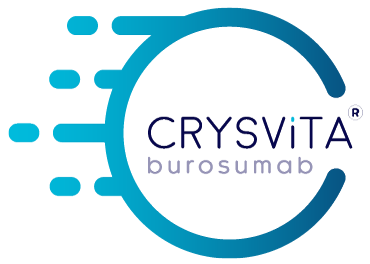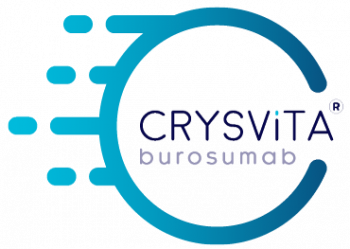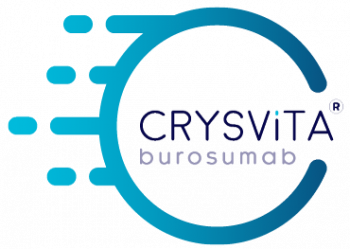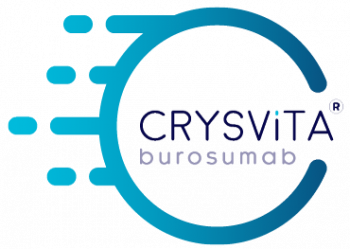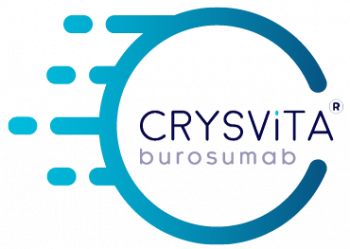Welcome to the CRYSVITA.Asia website
크리스비타® had been approved by TFDA and is indicated for the treatment of X-linked hypophosphataemia, in children and adolescents aged 1 to 17 years, and in adults with XLH related bone disease.1
Product is approved in EU/US/Japan and selected markets in Asia Pacific. Local approved prescribing information may differ.
Please refer to local approval status and prescribing information.
XLH란 무엇인가요?
XLH는 드물게 발생하는 유전성*, 진행성, 일생 동안 지속되는 인산 소실
질환이며, FGF23 과잉을 초래하는 PHEX 유전자에 생긴 돌연변이에
의해 발생됩니다.2–7
*In approximately 20–30% of cases, XLH occurs spontaneously and there is no family history8-10
크리스비타는 어떻게
작용하나요?
크리스비타® binds to and inhibits the biological activity of FGF23 restoring renal phosphate reabsorption and increasing the serum concentration of 1,25 dihydroxy vitamin D.1
왜 크리스비타를 투여해야 하나요?®?
크리스비타의® in children (aged ≥1 year) and adults with XLH has been studied in a global clinical development programme, comprising phase II and phase III clinical trials11-16
크리스비타는 어떻게 투여하나요?®
크리스비타® had been approved by TFDA and is indicated for the treatment of X-linked hypophosphataemia, in children and adolescents aged 1 to 17 years, and in adults with XLH related bone disease.1
XLH 환자 진료에 도움이 될 수 있는 자료
Resources include a dosing table, TmP/GFR factsheet, key facts summary, RSS and RGI-C factsheet, XLH Product Brochure
Adverse Event Reporting:
Adverse Events should be reported to Kyowa Kirin Taiwan Co., Ltd. by email at … or alternatively contact us using the following Enquiry Form.
1. CRYSVITA® (burosumab). Based on Taiwan Package Insert. Kyowa Kirin Taiwan., Ltd; 2022/04 2. Beck-Nielsen SS, et al. Orphanet J Rare Dis. 2019;14:58. 3. Carpenter TO, et al. J Bone Miner Res. 2011;26:1381–88. 4. Endo I, et al. Endocr J. 2015;62:811–16. 5. Haffner D, et al. Nat Rev Nephrol. 2019;15:435–55. 6. Martin A & Quarles LD. Adv Exp Med Biol. 2012;728:65–83. 7. Rafaelsen S, et al. Eur J Endocrinol. 2016;174:125–36. 8. Whyte MP, et al. J Clin Endocrinol Metab. 1996;81:4075–80. 9. Rajah J, et al. Eur J Pediatr. 2011;170:1089–96. 10. Dixon PH, et al. J Clin Endocrinol Metab. 1998;83:3615–23. 11. Carpenter TO, et al. N Engl J Med. 2018;378:1987-98. 12. Whyte MP, et al. Lancet Diabetes Endocrinol 2019;7:189-99. 13. Imel EA, et al. Lancet. 2019;393:2416–27. 14. Insogna KL, et al. J Bone Miner Res. 2018;33:1383–93. 15. Portale AA, et al. Calcif Tissue Int. 2019;105:271–84. 16. Insogna KL, et al. J Bone Miner Res. 2019;34:2183–91.
